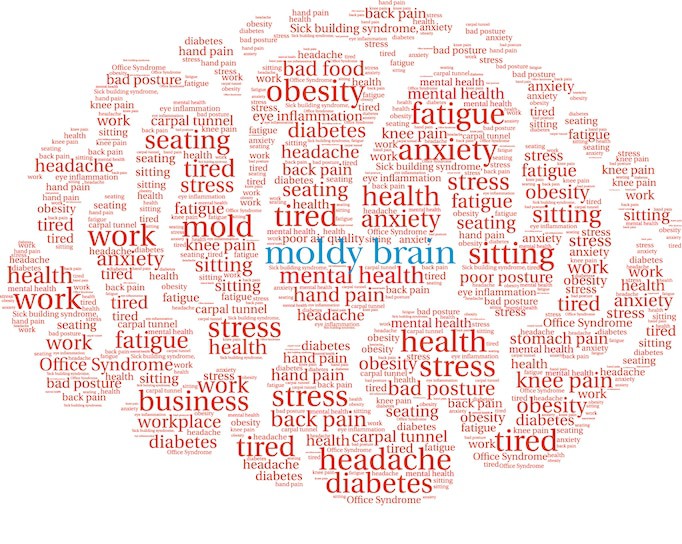Have you ever paused to consider the contaminants that you’re exposed to each and every day? The simple fact is, we live in an increasingly toxic world. Twenty-four hours a day, seven days a week, 365 days a year, we’re exposed to high levels of environmental toxins. These come in the form of biotoxins (such as mold toxins); toxins from bacterial, fungal, and viral infections; toxic chemicals such as pesticides; heavy metals; air pollution (smog); and dust and other irritants. Harmful chemicals can also be found in food, beverages, clothing, cleaning products, home construction materials and furnishings, and electronics and electronic emissions. When the toxins in our bodies exceed the body’s innate ability to detox, we are at an increased risk of developing one or more of the following environmentally acquired illnesses (EAIs): Allergies Alzheimer’s, Parkinson’s, and other neurodegenerative diseases Asthma Autistic spectrum disorders Autoimmune diseases Cancer Chronic inflammatory response […]
Environmentally acquired illness
While COVID-19 continues to besiege the human population, it has had a positive impact, at least temporarily, in some of the most polluted areas on our planet. Images from the National Aeronautics and Space Administration (NASA) and European Space Agency (ESA) pollution monitoring satellites show the stark contrast in nitrogen dioxide (NO2) levels over China before and during their quarantine (when transportation and industries were largely shut down). Nitrogen dioxide is a noxious gas emitted by motor vehicles, power plants, and industrial facilities. Imagine what would happen if we were able to stop polluting the planet, filter pollutants out of the environment, and focus our efforts on restoring healthy ecosystems in air, land, and water. Within a matter of years, we would see a big improvement in the environment overall. In just a few decades, we would start to notice increasing populations of diverse plants and animals as balance was
Meet the Patient is a series on the BioDesign Wellness Center blog showcasing actual patients we have treated over the years or are currently treating. (Each patient’s name and certain details about their case may be changed to ensure privacy.) Our hope is that these case studies resonate with anyone who is or knows someone struggling with a similar health condition and has not received an accurate diagnosis or effective medical treatment — especially those who may be close to giving up hope of ever feeling healthy, energetic, and happy again. Our objective with these case studies is to restore a belief that optimal health and fitness can be sought and achieved, even for those who are chronically ill and may have no clear explanation of the underlying cause of their pain or dysfunction. Meet Barbara Barbara is a thirty-year-old female with multiple severe neurological and other symptoms, including the following:
Tony Award-winning actress and singer Kristin Chenoweth is no stranger to migraines. She has been living with migraines since she experienced her first episode in a rehearsal room for a Broadway show nearly 25 years ago. Unfortunately, she is in a profession in which she cannot easily avoid her migraine triggers — spotlights, flashing lights, flying, and driving. At times she hasn’t been able to perform due to a debilitating migraine. Chenoweth is not alone. According to the Migraine Research Foundation, 12 percent of the population (including children) suffers from migraine — 18 percent of women in the U.S., six percent of men, and 10 percent of children. Migraines are most common between the ages of 18 and 44. Migraines are not just bad, throbbing headaches. Symptoms also include nausea/vomiting, dizziness/loss of balance, disturbed vision, fatigue, and sensitivity to light, sounds, and odors. Each person’s migraine experience is unique, and
Many people diagnosed with a mental illness or other psychiatric condition tell similar stories. They visit their primary care physician complaining of anxiety, overwhelming sadness, fatigue, joint or muscle aches and pains, brain fog, and other general symptoms. Their doctor orders a limited series of lab tests, examine the results, and finds “nothing wrong.” They are then either given a diagnosis on the spot or referred to a psychiatrist. Ultimately, they are told they have depression, anxiety, chronic fatigue syndrome, fibromyalgia, or some other diagnosis that doesn’t reveal what’s really going on or how to cure it. They are sent home with one or more prescriptions for antidepressants, pain relievers, and other medications that, at best, provide only temporary relief. Sometimes the medications provide no relief or even make the condition worse. The story changes only when a patient is fortunate enough to encounter a doctor who understands the effects
We hear a lot these days about the environment — most of it focuses on the long-term rise in the average temperature of the Earth’s climate system. Seemingly lost among the talk (and debate — over the causes of global warming) is one simple fact that’s hard to ignore. Unless you live in a bubble, you are being bombarded by toxins and infectious agents that could result in you contracting an environmentally acquired illness. Environmentally acquired illness (EAI) is characterized by any of a number of illnesses or syndromes (symptom clusters) caused by exposure to toxic molds and other biotoxins; toxic chemicals such as heavy metals and pesticides; and persistent infections, such as Lyme disease. Environmental toxins are in foods and beverages, furniture, carpets, clothing, cleaning products, cosmetics, personal hygiene products, medications, and the air around us. In addition, you can acquire serious and persistent infections from insect bites and




